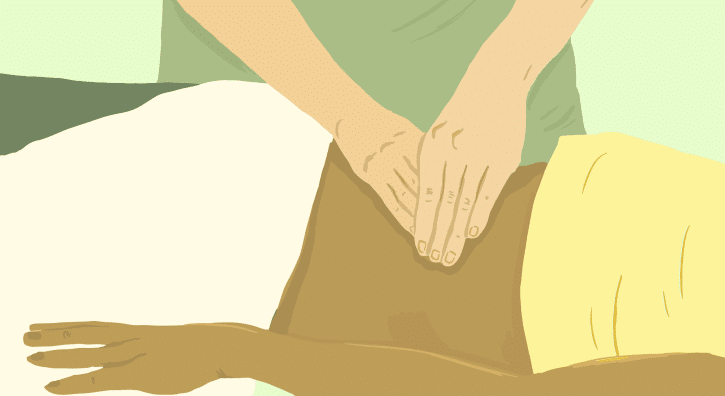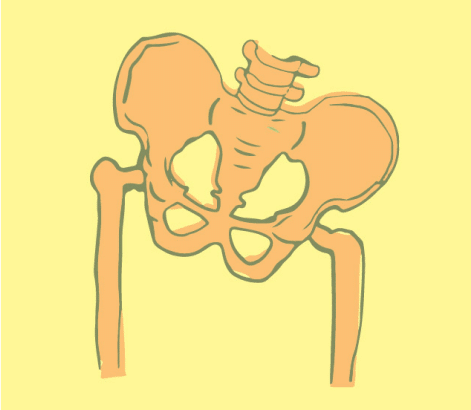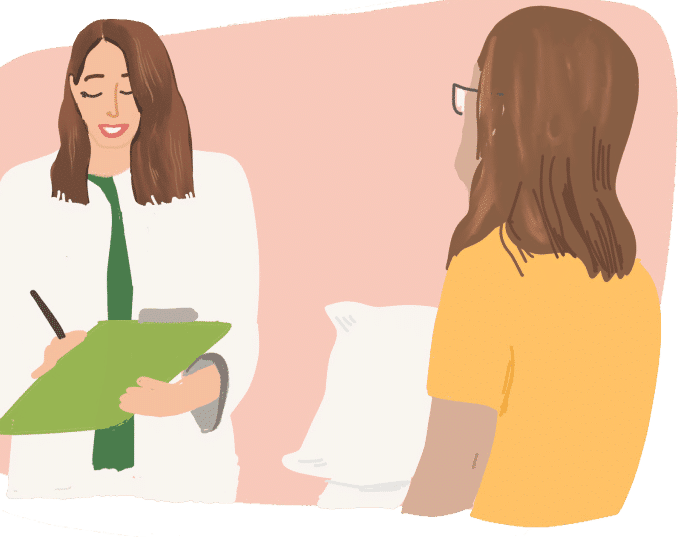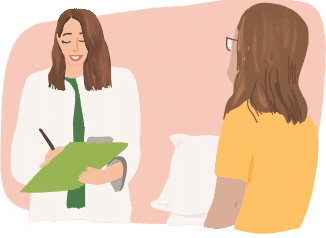

Sexual dysfunction can manifest in many ways, including reduced desire, difficulty with performance, trouble reaching orgasm, or pain during intimate activities. While hormones and psychological factors often come to mind, the pelvic floor muscles are a crucial, yet frequently overlooked, component of sexual health. These muscles play a vital role in enhancing sexual function—helping men maintain erections and facilitating the rhythmic contractions experienced during orgasm in both sexes. Normally, the pelvic floor supports pleasurable sensations. However, when dysfunction sets in, the experience can shift dramatically, leading to discomfort or reduced satisfaction. The good news is that targeted pelvic floor physical and occupational therapy can address these underlying muscular issues, offering an effective and holistic approach to restoring comfort, function, and confidence.
The Facts
- Roughly one in three women who are not yet menopausal will experience some form of discomfort or pain during intercourse at some point in their lives.
- Erectile difficulties have been documented in anywhere from 15% to 72% of men under age 40, depending on the population studied and contributing health factors.
- Among males aged 40 to 70, an estimated 52% encounter mild to moderate challenges related to achieving or maintaining an erection.
- Following prostate surgery, as many as 80% of male patients experience disruptions in erectile function.
- Nearly 60% of women going through menopause admit that they avoid discussing sexual discomfort with their healthcare provider due to feelings of shame or embarrassment.
- Hormonal medications such as birth control pills and certain dermatological treatments like those for acne can cause vaginal dryness or vulvar sensitivity, reducing comfort during intimacy.
- Around 65% of women continue to struggle with painful intercourse for up to a year and a half after childbirth.
Sexual dysfunction can manifest in many ways, including reduced desire, difficulty with performance, trouble reaching orgasm, or pain during intimate activities. While hormones and psychological factors often come to mind, the pelvic floor muscles are a crucial, yet frequently overlooked, component of sexual health. These muscles play a vital role in enhancing sexual function—helping men maintain erections and facilitating the rhythmic contractions experienced during orgasm in both sexes. Normally, the pelvic floor supports pleasurable sensations. However, when dysfunction sets in, the experience can shift dramatically, leading to discomfort or reduced satisfaction. The good news is that targeted pelvic floor physical and occupational therapy can address these underlying muscular issues, offering an effective and holistic approach to restoring comfort, function, and confidence.
The Facts
- Roughly one in three women who are not yet menopausal will experience some form of discomfort or pain during intercourse at some point in their lives.
- Erectile difficulties have been documented in anywhere from 15% to 72% of men under age 40, depending on the population studied and contributing health factors.
- Among males aged 40 to 70, an estimated 52% encounter mild to moderate challenges related to achieving or maintaining an erection.
- Following prostate surgery, as many as 80% of male patients experience disruptions in erectile function.
- Nearly 60% of women going through menopause admit that they avoid discussing sexual discomfort with their healthcare provider due to feelings of shame or embarrassment.
- Hormonal medications such as birth control pills and certain dermatological treatments like those for acne can cause vaginal dryness or vulvar sensitivity, reducing comfort during intimacy.
- Around 65% of women continue to struggle with painful intercourse for up to a year and a half after childbirth.
Symptoms
*Sexual Dysfunction in people with a penis
- Erectile dysfunction may show up in different ways, such as difficulty getting or keeping an erection, reduced firmness, or climax occurring sooner than desired.
- Some men also mention a noticeable decrease—or complete absence—of ejaculatory force.
- Another potential sign is the presence of urine leakage during orgasm, a condition known as climacturia.
- Post-ejaculatory pain can occur in various regions, including the tip or shaft of the penis, the testicles, or the area between the genitals and anus.
- You may also notice unusual changes in skin color across the penis, scrotum, or perineal region, which can accompany these symptoms.
Postpartum Sexual Dysfunction
- Hormonal changes while breastfeeding may reduce natural lubrication, leading to vaginal dryness during intimacy
- Ongoing pain near the perineum caused by previous tearing or an episiotomy incision
- Difficulty achieving orgasm or a complete loss of orgasmic sensation after childbirth
- Involuntary urine leakage occurring during sex or at the moment of climax
- Recurring pain that discourages or complicates attempts at resuming sexual activity
*Sexual Dysfunction in people with vulvas/vaginas
- Difficulty generating natural vaginal lubrication, or a persistent feeling of dryness, even when aroused
- Pain that occurs at the moment of initial penetration, during deeper thrusting, or throughout the entire sexual experience
- Discomfort or aching when the clitoris is stimulated, due to heightened or abnormal sensitivity
- A burning feeling in the vaginal or surrounding areas that emerges following intercourse
- Trouble achieving orgasm, or experiencing a diminished intensity during climax
- Episodes of accidental urination during intimate moments or sexual activity
- Involuntary leakage of urine at the peak of orgasm, a symptom medically referred to as climacturia
Menopausal Sexual Dysfunction and Post-gynecologic cancer treatment
- Vaginal dryness due to lowered estrogen levels, which impairs natural lubrication
- Inability to comfortably accommodate penetration, often resulting from tissue thinning
- Pain that begins during sex and may linger long after the act is over
- Diminished or completely absent ability to reach orgasm, often attributed to hormonal decline
Symptoms
*Sexual Dysfunction in people with a penis
- Erectile dysfunction may show up in different ways, such as difficulty getting or keeping an erection, reduced firmness, or climax occurring sooner than desired.
- Some men also mention a noticeable decrease—or complete absence—of ejaculatory force.
- Another potential sign is the presence of urine leakage during orgasm, a condition known as climacturia.
- Post-ejaculatory pain can occur in various regions, including the tip or shaft of the penis, the testicles, or the area between the genitals and anus.
- You may also notice unusual changes in skin color across the penis, scrotum, or perineal region, which can accompany these symptoms.
*Sexual Dysfunction in people with vulvas/vaginas
- Difficulty generating natural vaginal lubrication, or a persistent feeling of dryness, even when aroused
- Pain that occurs at the moment of initial penetration, during deeper thrusting, or throughout the entire sexual experience
- Discomfort or aching when the clitoris is stimulated, due to heightened or abnormal sensitivity
- A burning feeling in the vaginal or surrounding areas that emerges following intercourse
- Trouble achieving orgasm, or experiencing a diminished intensity during climax
- Episodes of accidental urination during intimate moments or sexual activity
- Involuntary leakage of urine at the peak of orgasm, a symptom medically referred to as climacturia
Postpartum Sexual Dysfunction
- Hormonal changes while breastfeeding may reduce natural lubrication, leading to vaginal dryness during intimacy
- Ongoing pain near the perineum caused by previous tearing or an episiotomy incision
- Difficulty achieving orgasm or a complete loss of orgasmic sensation after childbirth
- Involuntary urine leakage occurring during sex or at the moment of climax
- Recurring pain that discourages or complicates attempts at resuming sexual activity
Menopausal Sexual Dysfunction and Post-gynecologic cancer treatment
- Vaginal dryness due to lowered estrogen levels, which impairs natural lubrication
- Inability to comfortably accommodate penetration, often resulting from tissue thinning
- Pain that begins during sex and may linger long after the act is over
- Diminished or completely absent ability to reach orgasm, often attributed to hormonal decline
Associated Diagnoses
Diagnoses such as Endometriosis, Vulvodynia, Interstitial Cystitis/Painful Bladder Syndrome, Pudendal Neuralgia, Chronic Pelvic Pain Syndrome/Male Pelvic Pain, Lichen Sclerosus, Lichen Planus, Pelvic Floor Dysfunction, post-prostatectomy complications, and Genitourinary Syndrome of Menopause are all associated with sexual dysfunction and pelvic pain.

Associated Diagnoses
Diagnoses such as Endometriosis, Vulvodynia, Interstitial Cystitis/Painful Bladder Syndrome, Pudendal Neuralgia, Chronic Pelvic Pain Syndrome/Male Pelvic Pain, Lichen Sclerosus, Lichen Planus, Pelvic Floor Dysfunction, post-prostatectomy complications, and Genitourinary Syndrome of Menopause are all associated with sexual dysfunction and pelvic pain.


Causes of Sexual Dysfunction
- Pelvic pain syndromes associated with pelvic floor dysfunction (above)
- Childbirth
- Medications
- Obesity
- Cardiovascular disease
- Menopause
- Jelqing
- Genital mutilation, genital cutting
- Surgically-induced
- Pelvic Floor Reconstruction
- Prostatectomy
- Gender affirming surgery
- Episiotomy
- Vestibulectomy
- Pudendal Nerve Decompression
- Mesh excision
Causes of Sexual Dysfunction
- Pelvic pain syndromes associated with pelvic floor dysfunction (above)
- Childbirth
- Medications
- Obesity
- Cardiovascular disease
- Menopause
- Jelqing
- Genital mutilation, genital cutting
- Surgically-induced
- Pelvic Floor Reconstruction
- Prostatectomy
- Gender affirming surgery
- Episiotomy
- Vestibulectomy
- Pudendal Nerve Decompression
- Mesh excision

Diagnostic Challenges
An increasing number of studies highlight a persistent gap in conversations around sexual health between doctors and patients. Many healthcare providers feel unprepared or uncomfortable discussing intimate topics, and patients often mirror this discomfort—choosing silence over vulnerability out of fear of being judged or dismissed. This communication gap becomes even more problematic for members of the LGBTQ+ community, who are disproportionately subjected to bias and marginalization within clinical environments. As a result, their sexual health needs frequently go unacknowledged or inadequately addressed. At PHRC, we believe it’s time for a change. Our team is committed to fostering a safe, inclusive space where all patients feel empowered to speak openly about their pelvic health. Sexual well-being is now recognized as a legitimate medical specialty, and with the right multidisciplinary approach—combining medical expertise, psychological insight, and pelvic floor rehabilitation—patients can experience meaningful improvement in both physical and emotional aspects of intimacy.
Diagnostic Challenges
An increasing number of studies highlight a persistent gap in conversations around sexual health between doctors and patients. Many healthcare providers feel unprepared or uncomfortable discussing intimate topics, and patients often mirror this discomfort—choosing silence over vulnerability out of fear of being judged or dismissed. This communication gap becomes even more problematic for members of the LGBTQ+ community, who are disproportionately subjected to bias and marginalization within clinical environments. As a result, their sexual health needs frequently go unacknowledged or inadequately addressed. At PHRC, we believe it’s time for a change. Our team is committed to fostering a safe, inclusive space where all patients feel empowered to speak openly about their pelvic health. Sexual well-being is now recognized as a legitimate medical specialty, and with the right multidisciplinary approach—combining medical expertise, psychological insight, and pelvic floor rehabilitation—patients can experience meaningful improvement in both physical and emotional aspects of intimacy.
Treatment:
How We Can Help You

If you’re a resident of Beverly Hills and struggling with issues related to sexual dysfunction, it’s important to know that help is available—and it may start with your pelvic floor. At our clinic, we encourage anyone experiencing these symptoms to book a comprehensive evaluation with one of our skilled pelvic floor physical and occupational therapists. During your first visit, we’ll take time to fully understand your medical history, review any formal diagnoses you’ve received, and go over treatments you’ve tried in the past—whether they’ve helped or not. Many of our patients from the Beverly Hills area express feeling overlooked or discouraged prior to finding us, and we aim to change that by offering informed, compassionate care. The evaluation includes a physical exam assessing your pelvic muscles, soft tissues, nerves, joints, and overall mobility patterns. Afterward, your therapist will explain their findings in detail and walk you through a tailored treatment plan built around your unique goals. Most individuals attend therapy once or twice a week over a 12-week period, alongside a guided home exercise program. We also stay in close contact with any other providers involved in your care, ensuring a truly collaborative approach. At every step, we’re here to help you find relief and regain a greater sense of comfort and confidence—both in Beverly Hills and beyond.

Treatment:
How We Can Help You
If you’re a resident of Beverly Hills and struggling with issues related to sexual dysfunction, it’s important to know that help is available—and it may start with your pelvic floor. At our clinic, we encourage anyone experiencing these symptoms to book a comprehensive evaluation with one of our skilled pelvic floor physical and occupational therapists. During your first visit, we’ll take time to fully understand your medical history, review any formal diagnoses you’ve received, and go over treatments you’ve tried in the past—whether they’ve helped or not. Many of our patients from the Beverly Hills area express feeling overlooked or discouraged prior to finding us, and we aim to change that by offering informed, compassionate care. The evaluation includes a physical exam assessing your pelvic muscles, soft tissues, nerves, joints, and overall mobility patterns. Afterward, your therapist will explain their findings in detail and walk you through a tailored treatment plan built around your unique goals. Most individuals attend therapy once or twice a week over a 12-week period, alongside a guided home exercise program. We also stay in close contact with any other providers involved in your care, ensuring a truly collaborative approach. At every step, we’re here to help you find relief and regain a greater sense of comfort and confidence—both in Beverly Hills and beyond.
How Can We Help You?
Please use the form below to send us any questions or comments. You must include your e-mail address in order for us to send a response. Please be assured that all of your information will be kept confidential.

Join The Newsletter. Win a copy of our book, “Pelvic Pain Explained!”
We love getting to know our website visitors. Please tell us a little bit about yourself and get the latest info via PHRC e-newsletter!
*Subscribers automatically eligible to win our book, “Pelvic Pain Explained.”
Pelvic Pain Explained is, at its core, a story of how pelvic pain unfolds in people’s lives—how it begins, how it disrupts, and how it demands attention in ways that are often misunderstood. This work dives into the complex reality of navigating the healthcare system in search of answers, shedding light on the frustration and resilience of both patients and providers. It examines the emotional and logistical barriers that frequently delay accurate diagnosis and effective treatment. With a compassionate lens, the book unpacks the uncertainty that comes with exploring varied therapeutic options and addresses the invisible but heavy toll pelvic pain takes on self-identity, relationships, and daily life. It’s a thorough, thoughtful exploration of a condition that remains widely overlooked yet profoundly impactful.


